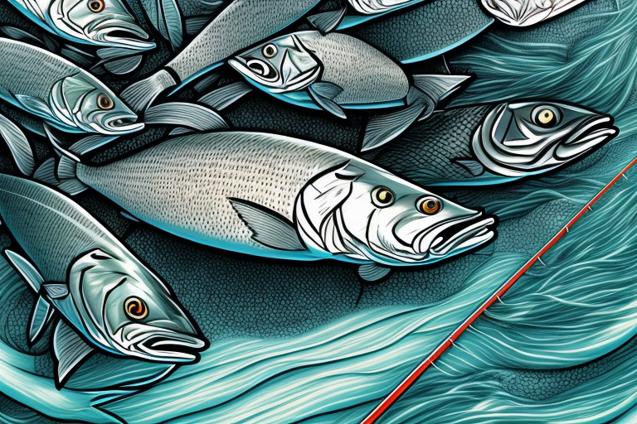
Discover the importance of sustainable fishing practices for preserving the health of our oceans and supporting the livelihoods of fishing communities.
The Benefits of Using Sustainable Fishing Practices
As we embark on our sailing adventures, it’s essential to remember that we are not just visitors to the ocean, but also stewards of its health and well-being. One of the most significant ways we can contribute to the preservation of marine life is by adopting sustainable fishing practices. In this article, we will explore the benefits of sustainable fishing, discuss various methods, and provide tips on how you can incorporate these practices into your own sailing journey.
What is Sustainable Fishing?
Sustainable fishing refers to practices that maintain healthy fish populations, minimize environmental impacts, and support the livelihoods of fishing communities. These practices ensure that we can continue to enjoy the bounty of the sea without depleting its resources or causing harm to the delicate marine ecosystems that support life on our planet.
Why is Sustainable Fishing Important?
The world’s oceans are facing unprecedented challenges due to overfishing, habitat destruction, and climate change. According to the United Nations Food and Agriculture Organization (FAO), nearly 90% of global fish stocks are either fully exploited, overexploited, or depleted. This has led to a decline in biodiversity, disrupted food chains, and threatened the livelihoods of millions of people who depend on fishing for their income and food security.
By adopting sustainable fishing practices, we can help reverse these trends and ensure that future generations can continue to enjoy the benefits of healthy oceans.
Benefits of Sustainable Fishing
-
Conservation of fish populations: Sustainable fishing practices help maintain healthy fish populations by preventing overfishing and allowing fish stocks to recover. This ensures that there is a continuous supply of fish for both human consumption and the marine ecosystem.
-
Preservation of marine ecosystems: Sustainable fishing methods minimize the impact on marine habitats and non-target species. This helps maintain the balance of the ecosystem and supports the survival of various marine species, including those that are endangered or threatened.
-
Support for local communities: Sustainable fishing practices can provide long-term economic benefits for fishing communities by ensuring a stable supply of fish and reducing the risk of resource depletion. This can lead to increased income, improved food security, and a better quality of life for those who depend on fishing for their livelihoods.
-
Promotion of responsible tourism: As more people become aware of the importance of sustainable fishing, there is a growing demand for eco-friendly tourism experiences. By offering sustainable fishing opportunities, sailing enthusiasts can attract environmentally conscious travelers and contribute to the growth of responsible tourism.
-
Contribution to global food security: With the world’s population expected to reach 9.7 billion by 2050, sustainable fishing practices can help meet the growing demand for food while preserving the health of our oceans.
Sustainable Fishing Methods
There are several sustainable fishing methods that minimize the impact on marine ecosystems and help maintain healthy fish populations. Some of these methods include:
-
Pole-and-line fishing: This method involves using a single fishing line with a hook attached to a pole. It is a selective fishing method that targets specific species and reduces the risk of bycatch (unintentionally catching non-target species).
-
Handline fishing: Similar to pole-and-line fishing, handline fishing uses a single fishing line with a hook, but without the pole. Fishers hold the line in their hands and manually pull in the fish. This method is also selective and reduces bycatch.
-
Trolling: Trolling involves towing fishing lines with lures or baited hooks behind a moving boat. This method is used to target specific species, such as tuna and salmon, and minimizes the impact on the seabed.
-
Trap fishing: Trap fishing uses stationary devices, such as pots or traps, to catch fish. These devices are designed to allow non-target species to escape, reducing bycatch and minimizing the impact on marine habitats.
-
Spearfishing: Spearfishing is a selective method that involves using a spear or a speargun to catch fish. This method requires skill and precision, allowing fishers to target specific species and reduce bycatch.
Tips for Incorporating Sustainable Fishing Practices into Your Sailing Adventure
-
Choose the right gear: Use fishing gear that minimizes the impact on marine habitats and reduces bycatch. For example, use circle hooks instead of J-hooks, as they are less likely to cause injury to non-target species.
-
Follow local regulations: Familiarize yourself with local fishing regulations and adhere to them. These regulations are designed to protect fish populations and marine ecosystems.
-
Practice catch and release: If you catch a fish that is not your target species or is undersized, release it back into the water as quickly and gently as possible.
-
Be mindful of your fishing location: Avoid fishing in sensitive areas, such as coral reefs or seagrass beds, which are critical habitats for many marine species.
-
Support sustainable seafood: When purchasing seafood, look for products that are certified by organizations such as the Marine Stewardship Council (MSC) or the Aquaculture Stewardship Council (ASC). These certifications indicate that the seafood was sourced from sustainable fisheries or farms.
-
Educate others: Share your knowledge of sustainable fishing practices with fellow sailors and encourage them to adopt these practices as well.
By incorporating sustainable fishing practices into our sailing adventures, we can play a vital role in preserving the health of our oceans and ensuring that future generations can continue to enjoy the benefits of marine life. So, let’s set sail with a commitment to protect the environment and support the well-being of our planet.